A private jet is a premium aircraft designed for personal or corporate use. Private jets are powered by jet engines and offer convenience, comfort, and safety for long flights. Jets include lie-flat seating, advanced entertainment systems, and spacious cabins for optimal comfort, alongside state-of-the-art avionics, terrain awareness, and weather radar for secure flights. Browse, choose, compare and buy a private jet.
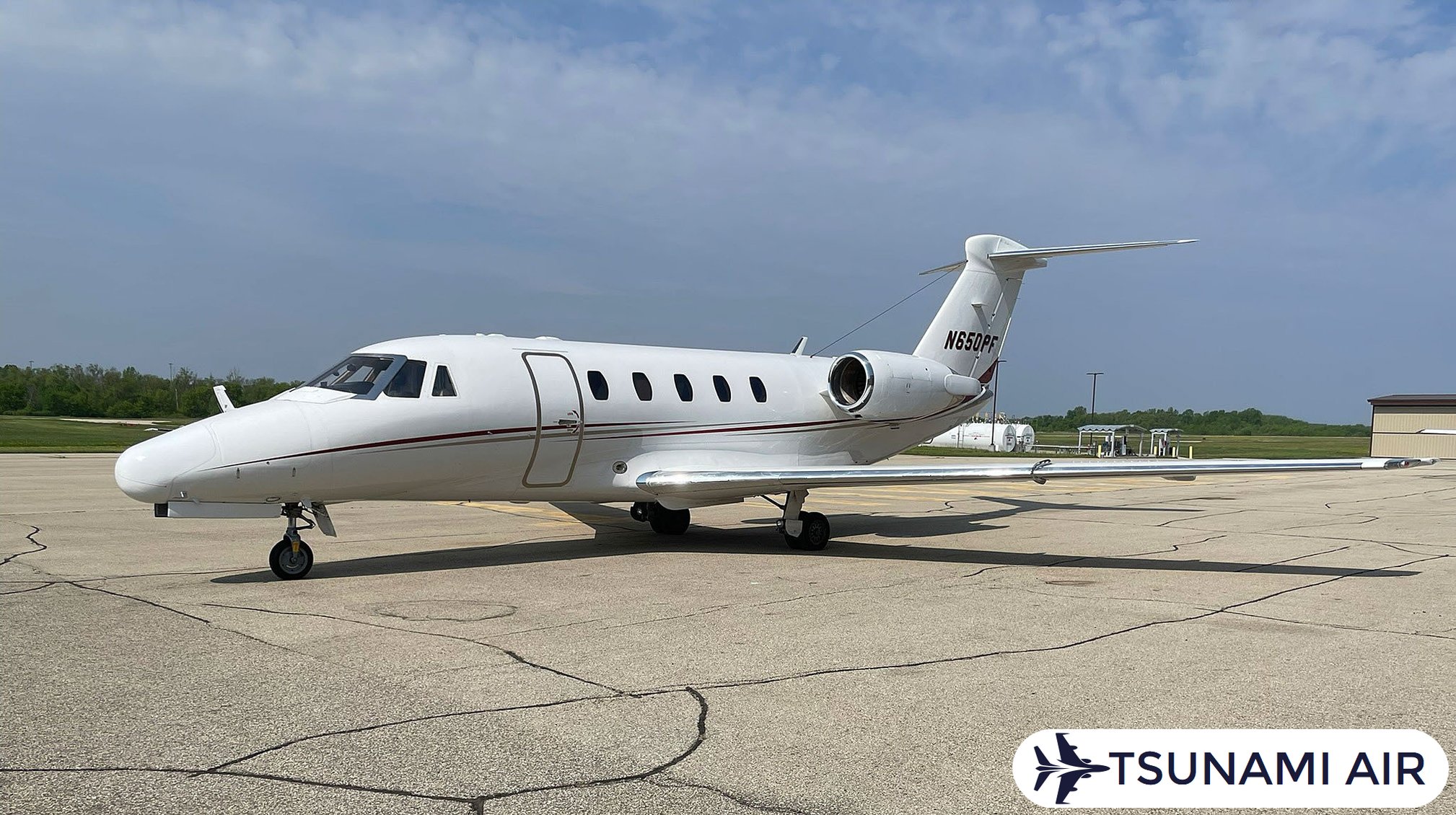
USD $N/A
JetReg Number
N650PF
Total Time
8,814.4 hrs
Location
United States
Year
1988
Seller: Sales Team
Phone: +1 (847) 726 5000
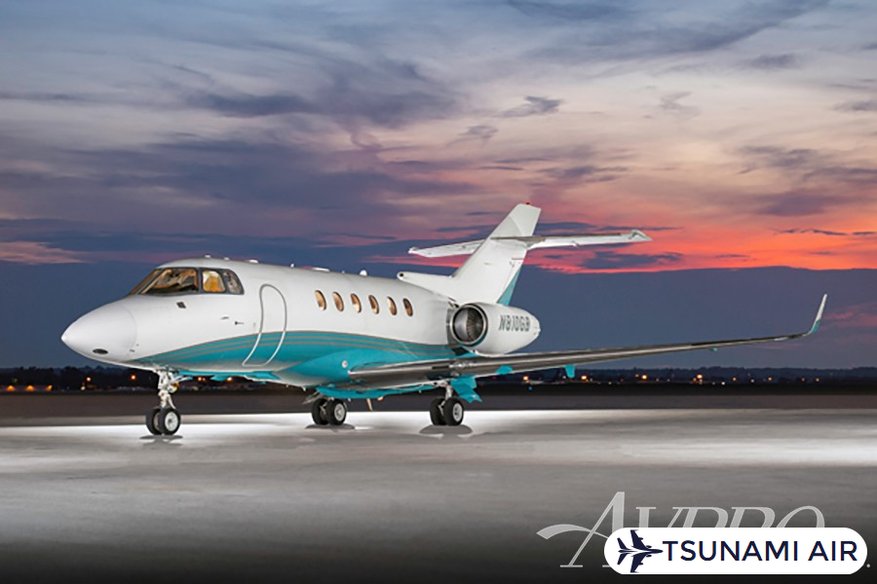
USD $N/A
JetReg Number
N810GB
Total Time
3197 hrs
Location
South America, Ecuador
Year
2006
Seller: Dave Gambacorta
Phone: +1 (410) 573 1515
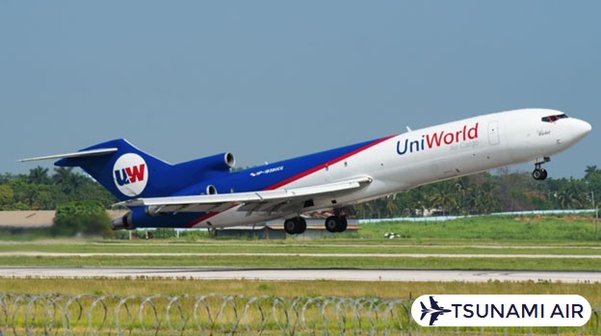
USD $N/A
JetReg Number
-
Total Time
60,370 hrs
Location
Central America, Panama
Year
1981
Seller: Dave Coleman
Phone: +1 (847) 748 8333
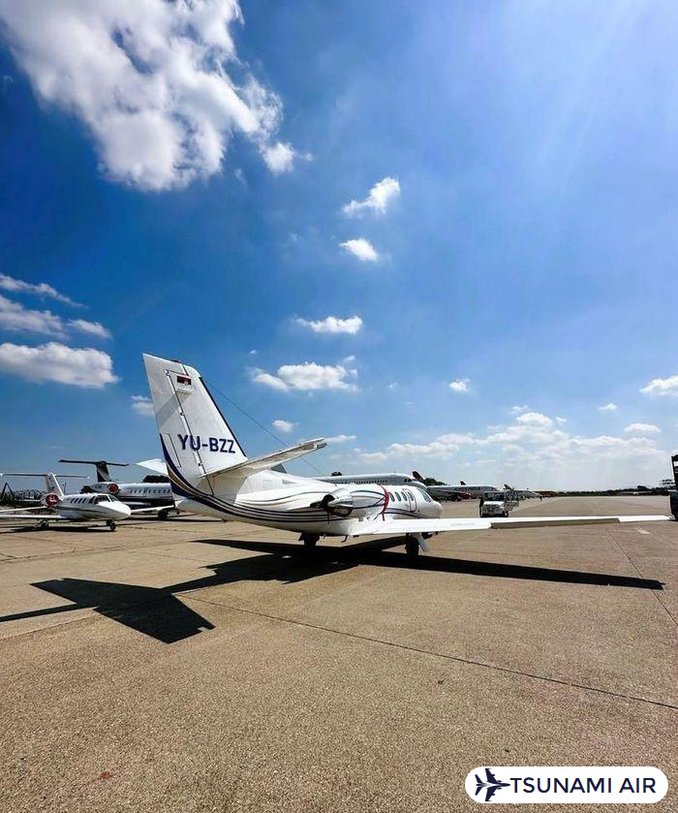
USD $Call for Price
JetReg Number
YU-BZZ
Total Time
10493 hrs
Location
Serbia
Year
2000
Seller: International Aircraft Marketing & Sales - Mike Milanovic
Phone: (630) 291-1309 - cell
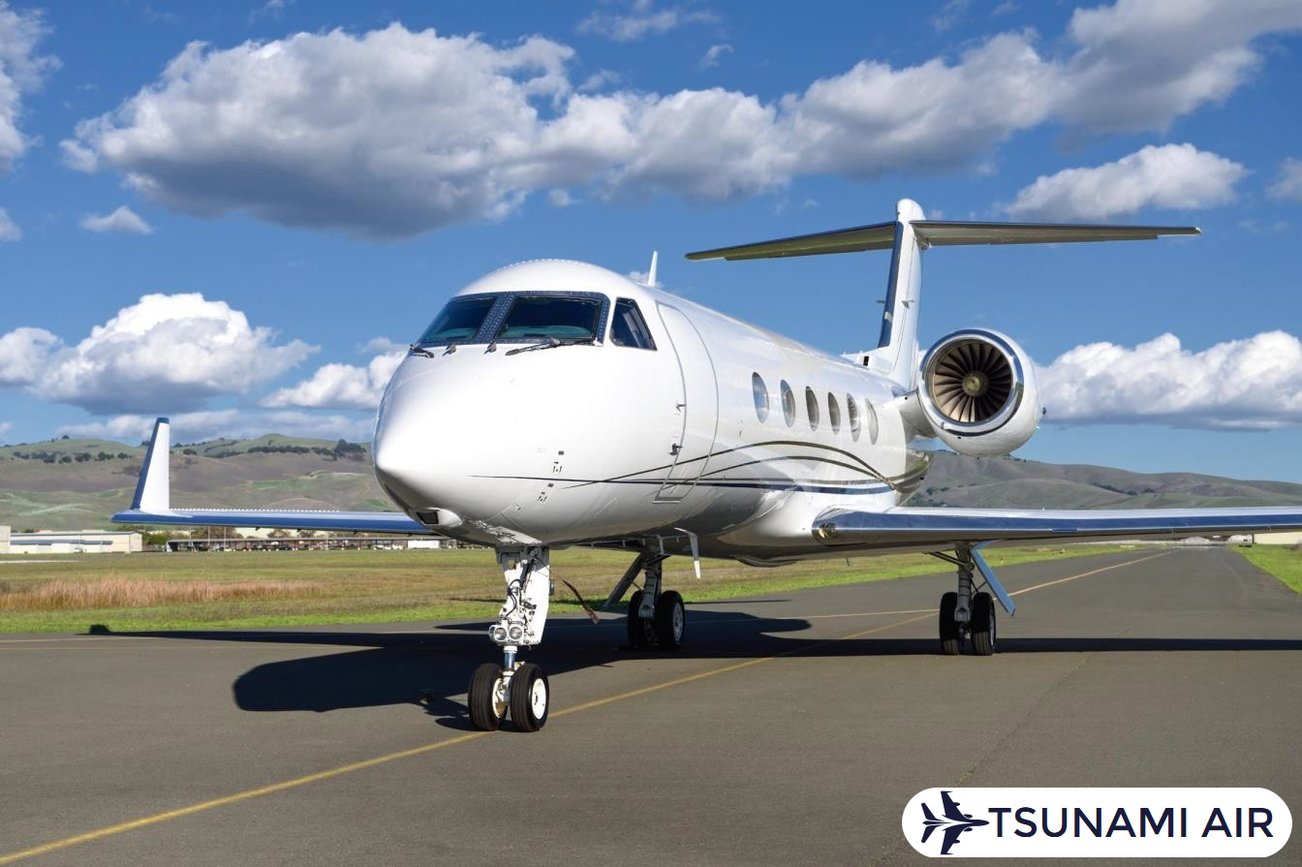
USD $N/A
JetReg Number
N455MB
Total Time
10538 hrs
Location
United States
Year
2004
Seller: AIRCRAFT SALES
Phone: +1 (514) 636-1099
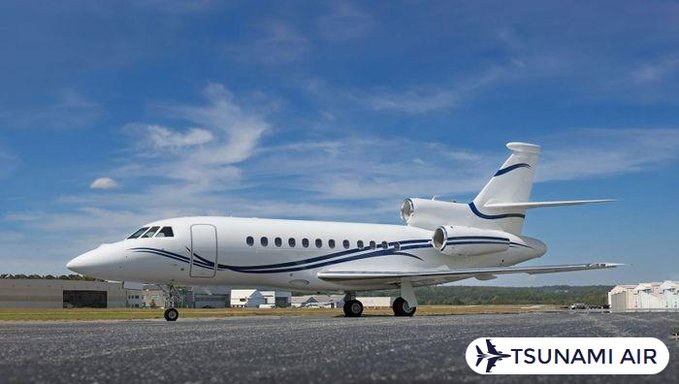
USD $Call for Price
JetReg Number
Not Listed
Total Time
7731 hrs
Location
United States
Year
2009
Seller: N/A
Phone: (770) 955-3554
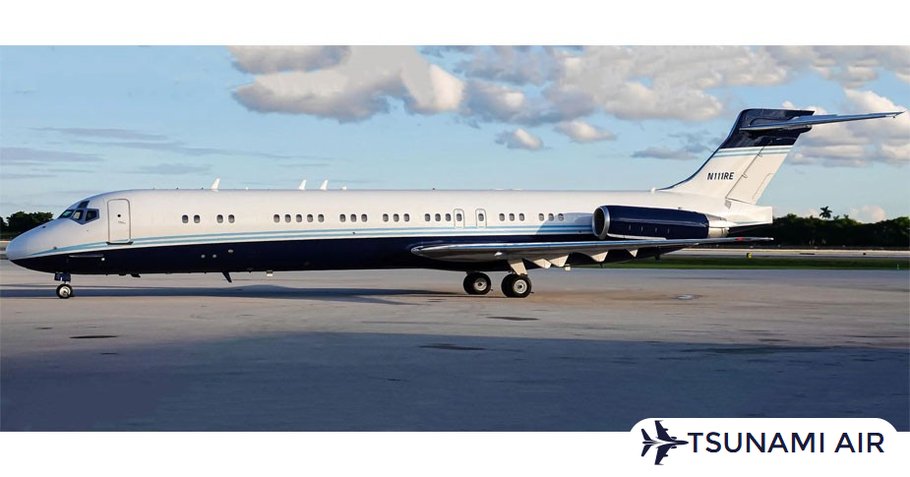
USD $N/A
JetReg Number
N111RE
Total Time
28,128 hrs
Location
Middle East, United Arab Emirates
Year
-
Seller: U.S Aircraft Sales
Phone: +1 (727) 366 1350
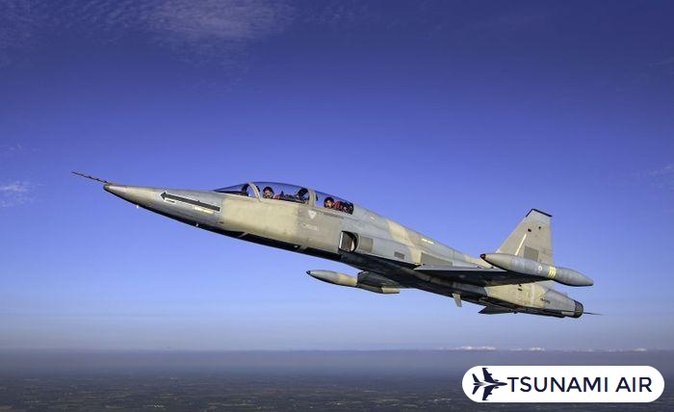
USD $2,200,000
JetReg Number
N840MQ
Total Time
3096 hrs
Location
United States
Year
1974
Seller: N/A
Phone: (800) 210-1951
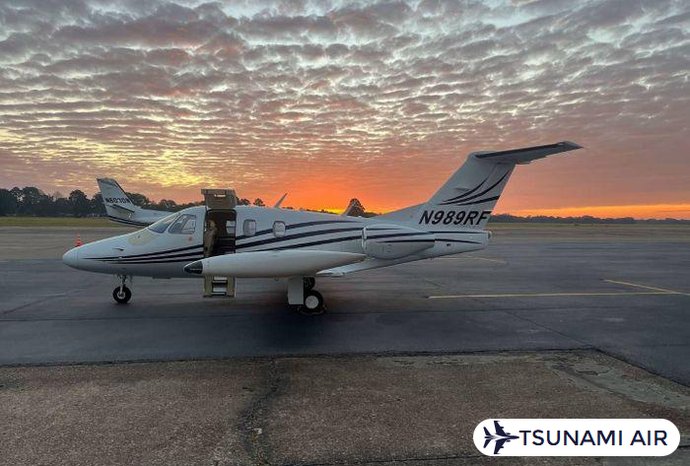
USD $1,850,000
JetReg Number
N989RF
Total Time
1195 hrs
Location
United States
Year
2008
Seller: International Aircraft Marketing & Sales - Reed McLelland
Phone: (256) 604-9523
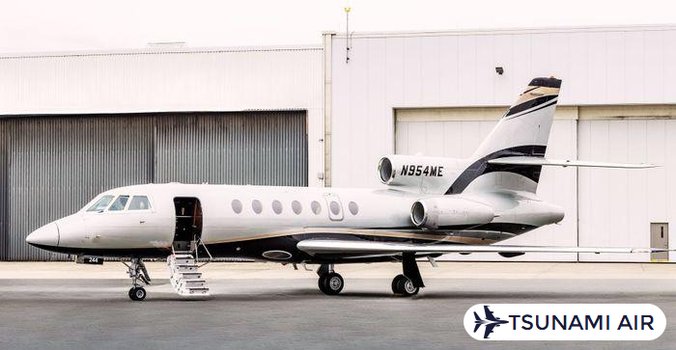
USD $Call for Price
JetReg Number
N954ME
Total Time
12420 hrs
Location
United States
Year
1994
Seller: Jet Access - Julie Ricker
Phone: (765) 621-1414
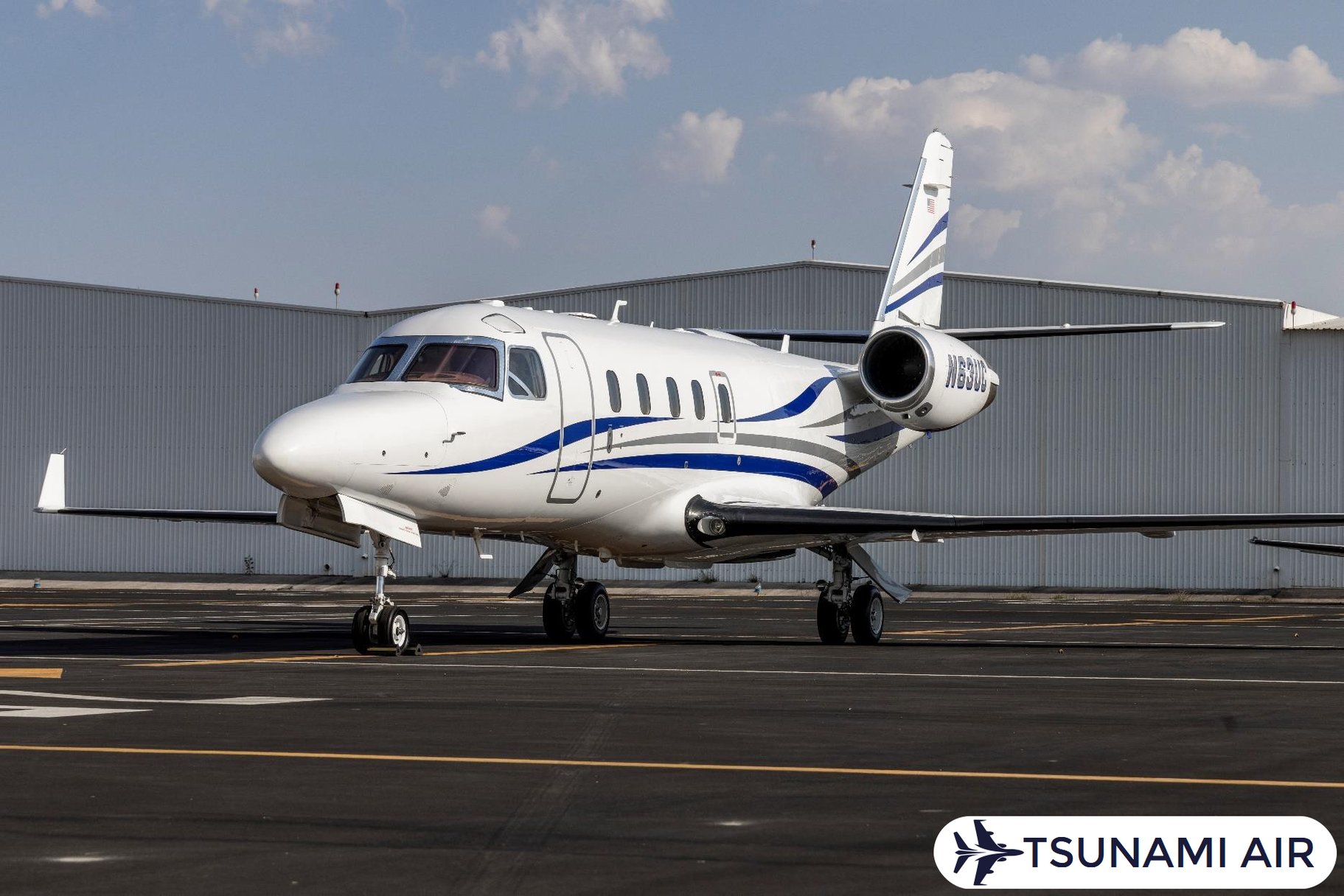
USD $N/A
JetReg Number
N63UC
Total Time
4,372 hrs
Location
United States
Year
2001
Seller: Curt McCauley
Phone: +1 (203) 453 0800
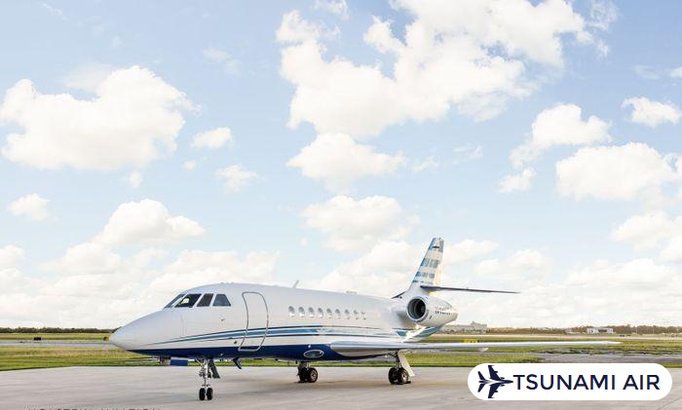
USD $5,500,000
JetReg Number
N46HA
Total Time
11206 hrs
Location
United States
Year
1999
Seller: Holstein Aviation Inc - Brad Stancil
Phone: (770) 330-9586
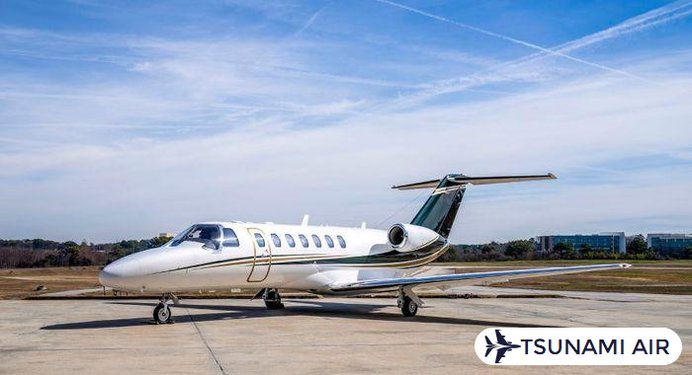
USD $Call for Price
JetReg Number
Not Listed
Total Time
2884 hrs
Location
United States
Year
2007
Seller: N/A
Phone: (770) 955-3554
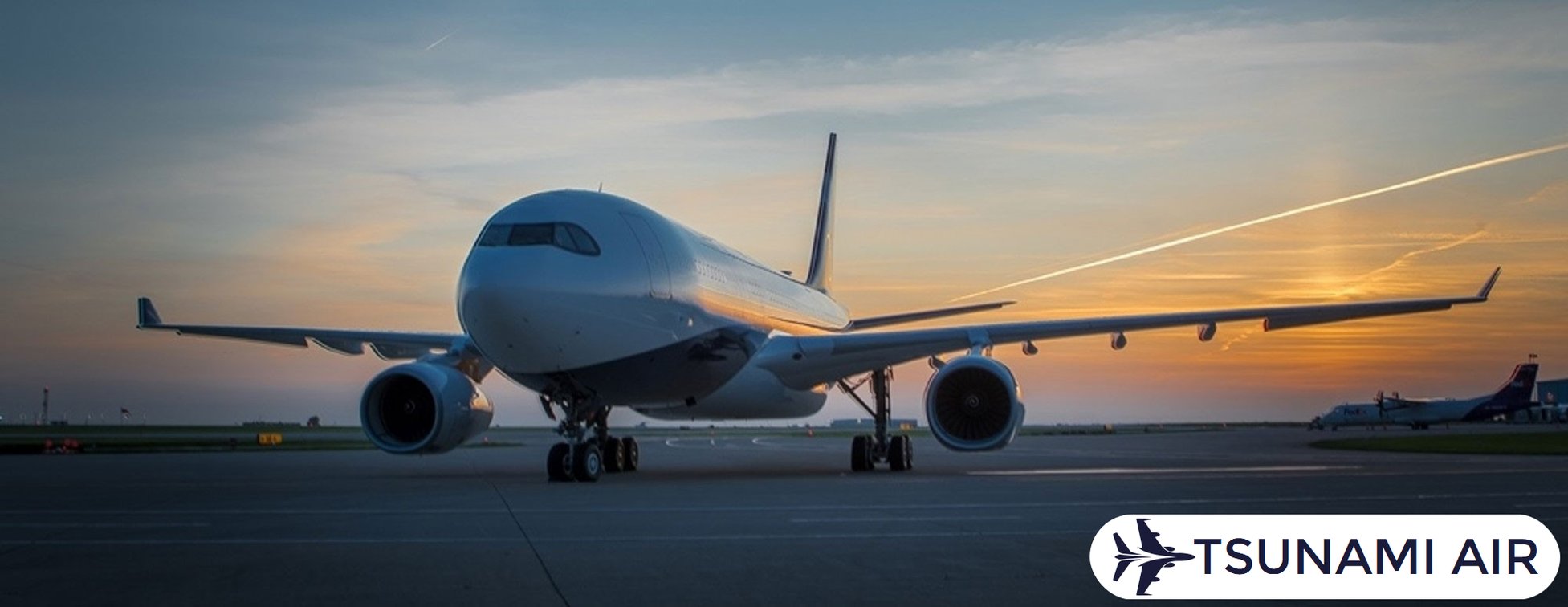
USD $N/A
JetReg Number
P4-MLO
Total Time
- hrs
Location
Switzerland
Year
-
Seller: Sales Contact
Phone: +41 (0) 44 205 50 70
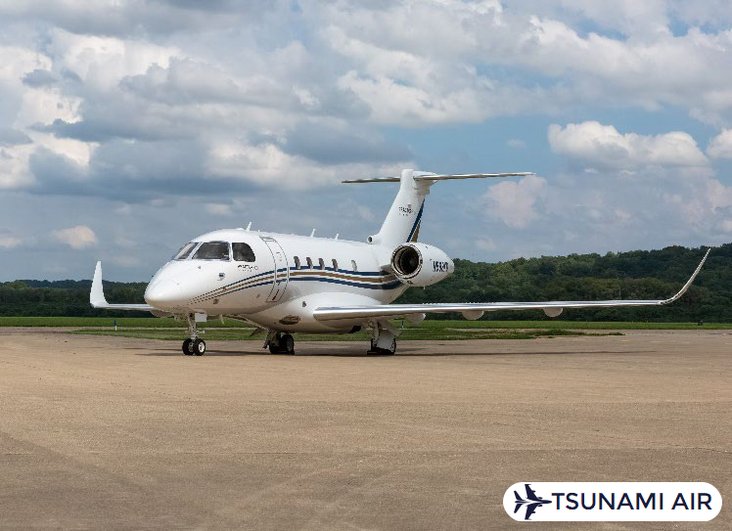
USD $16,495,000
JetReg Number
N588KD
Total Time
1,265 hrs
Location
United States
Year
2016
Seller: Zach Conover
Phone: +1 (203) 843 3684
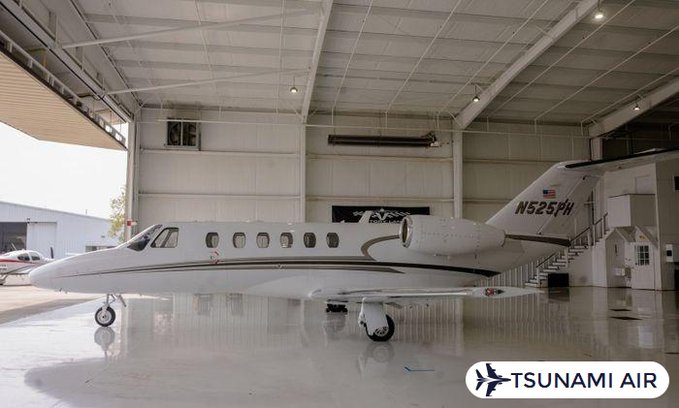
USD $Call for Price
JetReg Number
N525PH
Total Time
3880 hrs
Location
United States
Year
2006
Seller: Southern Cross Aircraft - Rick Carvalho
Phone: (954) 377-0303
A private jet is a luxury aircraft designed for small group transportation, used by individuals or organizations for personal, business, or family purposes, offering privacy, convenience, and comfort. Private jets are owned or chartered for exclusive use.
Private jets are designed to offer convenience and flexibility in travel scheduling, allowing passengers to fly according to their own timetables. Aircraft safety remains a priority, with private jets adhering to stringent maintenance standards and incorporating advanced aviation technology. Comfort, luxury, and customization options define the private jet experience, as these aircraft include bespoke interiors, spacious bathrooms, and conference rooms equipped with the latest technology. Private jet customization ensures that travelers can tailor the aircraft to meet specific preferences, refining the overall travel experience.
Business jets are advantageous in corporate and executive contexts, providing efficiency and exclusivity for corporate travelers. Charter service on-demand enables seamless access to private jet travel, while upgraded capabilities like superior aircraft range and optimized aircraft performance support rapid, multi-city trips. Business jet flexibility allows executives to maximize productivity by avoiding commercial airport hassles and accessing smaller airports closer to final destinations. The integration of office spaces and advanced communication systems within private jets further supports business jet executive use.
Luxury transportation prestige is a hallmark of private aviation, with private jets offering opulence through high-end amenities like lavish interiors, individual atmospheric controls, and High-Efficiency Particulate Air (HEPA) air filtration systems. Private jet privacy ensures confidential meetings and undisturbed journeys, making these aircraft ideal for high-profile individuals and families. Exclusivity defines the private jet experience, as private jets cater to specialized needs with personalized charter service accessibility. Programs like private jet cards streamline access to these benefits, reinforcing the jet’s status as a symbol of luxury transportation opulence.
Private jets are engineered with cutting-edge aviation innovation, emphasizing advancements in aircraft aerodynamics, aviation infrastructure, and engine efficiency. These jets vary widely in size and capability, accommodating up to 19 passengers while offering multiple cabins, bedrooms, and advanced entertainment systems in larger models. Superior aircraft performance enables longer non-stop flights and smoother rides, aided by improvements in materials and cockpit systems. Aviation technology continues to evolve, guaranteeing private jets remain at the forefront of efficient, secure, and flexible air travel solutions.
The differences between a private jet and a plane include size, weight, and passenger capacity. Private jets are smaller aircraft used for private travel, while commercial planes are large aircraft operated for public transportation. Private jets weigh less and accommodate fewer passengers. Commercial planes can carry hundreds of passengers and weigh more. Private jets cruise at higher altitudes and offer faster, more flexible travel with personalized comfort.
Differences between a private jet and a plane are explained in the table below.
Feature | Private Jet | Commercial Plane |
Size | Small | Large |
Passenger Capacity | 4-19 | 100-500+ |
Cruising Altitude (feet) | 41,000-51,000 | 35,000-40,000 |
Speed (Km/h) | 500-700 | 800-900 |
Range (Nautical Miles) | 1,500-7,000 | 2,000-8,000 |
Cabin Features | Lie-flat seats, WiFi, satellite phones, meeting tables, entertainment systems | Standardized seating, limited customization |
Operating Costs ($/hour) | $2,000-$10,000 | N/A |
Purpose | Private travel, luxury, exclusivity | Public transportation, economy |
Maintenance Focus | Personalized service | Safety, reliability, fixed schedules |
Private jets perform with higher cruising altitudes between 41,000 (12,496 meters) and 51,000 (15,544 meters) feet, optimizing private jet performance above commercial traffic. Speeds range from 500 (310.7 miles) to 700 (434.9 miles) kilometers per hour, with some models exceeding 900 (559.2 miles) kilometers per hour. Private jet range spans 1,500 to 7,000 nautical miles, enabling nonstop coast-to-coast flights in the United States. Operating costs range from $2,000 to $10,000 per hour, covering fuel, crew, maintenance, and landing fees. Commercial airliners cruise at speeds of 800 (497 miles) to 900 (559 miles) kilometers per hour but face longer door-to-door times due to airport processes. Ranges extend from 2,000 to 8,000 nautical miles, maximizing commercial airliner fuel efficiency for mass transport.
Private aircraft project prestige, exclusivity, and customised service, refining business jet brand image for users. Executive aircraft prioritize private jet privacy and personalized travel, underscoring their purpose for executive and luxury travelers. Commercial planes emphasize safety, reliability, and accessibility, adhering to rigorous maintenance procedures and fixed schedules. General aviation aircraft bridge gaps by offering versatility and lower operating costs while serving purposes like recreation, training, and short-haul business. These aircraft demonstrate slower speeds, lower altitudes, and shorter ranges compared to jets, aligning with their design for diverse yet economical operations.
Features of a private light jet include accommodating seating for 6 to 7 passengers, cruising speeds up to 422 KTAS, and ranges between 1,200 and nearly 2,000 nautical miles. These aircraft offer efficient performance with maximum takeoff weights under 12,500 pounds (5,670 kilograms). Specifications vary by model but cater to regional travel needs.
The features of a private light jet are outlined below.
Light private jets are constructed using advanced airframe materials like aluminum alloys and carbon fiber, assuring a balance of strength and reduced weight. Light jet airframe aerodynamics emphasize minimized drag to enhance fuel efficiency and lift performance. Structural design focuses on durability while maintaining optimal weight for short to medium-distance flights. Engines in light private jets deliver high thrust-to-weight ratios, with models like the Williams International FJ33-5A producing 1,846 lbs (837 kg) of thrust. Engine performance supports cruising speeds of up to 404 knots, while engine efficiency ensures extended operational range. Twin turbofan engines, namely the PW610F in the Eclipse 500, further exemplify the capabilities of light jets.
Avionics suite technology in light private jets includes fully integrated systems with touch-screen displays and synthetic vision for refined reliability. Avionics suite integration streamlines pilot control, reducing workload during flights. Navigation system accuracy is achieved through WAAS-enabled GPS, guaranteeing precise routing. Safety system redundancy incorporates multiple backups for serious functions, including fire suppression and emergency oxygen systems. Safety system compliance adheres to international aviation standards, reinforcing the robustness of these aircraft. Reliability in navigation systems ensures uninterrupted operation even in adverse conditions.
Cabin interior comfort in light private jets features ergonomic seating for up to eight passengers, with options for leather upholstery and wood veneer accents. Cabin interior luxury extends to amenities like Wi-Fi connectivity, fold-out tables, and customizable interiors. Flight deck instrumentation includes advanced digital displays and integrated autopilot systems, optimizing flight deck ergonomics. Flight deck layout is designed for single-pilot operations; some models accommodate two pilots. Large windows enhance cabin interior space and provide panoramic views, contributing to passenger satisfaction.
Operational range distance in light private jets spans between 1,000 and 2,000 nautical miles, allowing nonstop regional travel. Fuel system capacity ranges from 1,000 (453.6 kg) to 2,500 (1,133.98 kg) lbs, with computerized fuel control systems assuring efficient consumption. Landing gear durability supports repeated landings on shorter runways, boosting operational flexibility. Landing gear stability ensures safe taxiing and braking under maximum takeoff weights of up to 12,500 pounds (5,670 kilograms). Operational range efficiency reduces costs, making light private jets an economical choice for frequent travelers seeking speed, comfort, and accessibility.
The different types of private jet aircraft include Very Light Jets, Light Jets, Midsize Jets, Super Midsize Jets, Large Jets, and Long-Range Jets. Gulfstream, Cessna Citation, and Embraer Phenom series are prominent in various categories. Executive/VIP Jets offer the highest range and luxury for trans-oceanic flights.
The different types of private jet aircraft are outlined below.
Jet planes are used for transporting people and cargo over various distances. Jets leverage their ability to fly at high speeds and altitudes for efficient travel in both commercial and private aviation. Commercial jets connect domestic and intercontinental destinations while private jets offer customized, flexible transport with cruising efficiency.
Military jet defense operations include combat, surveillance, training, and logistical support. Fighter jets achieve speeds exceeding Mach 2 for air superiority missions. Cargo jets transport equipment and supplies to remote locations. Private jet luxury transport emphasizes flexibility and privacy for individuals. Air ambulance emergency medical services deliver patients over distances of hundreds of miles. Business jet corporate travel involves transporting executives efficiently with amenities like workspaces. Commercial jet passenger transport carries thousands of passengers daily using models like Boeing’s 737 MAX and 787 Dreamliner. Cargo jet cargo delivery supports global supply chains with freighters serving over 90% of the market. Jet engines power these applications with turbine technology enabling high-altitude flight at speeds above 500 mph (804.672 km/h).
In military settings, jets perform interception, ground attack, and reconnaissance missions. Military jet combat support provides rapid deployment with advanced avionics and weaponry. Supersonic speeds up to Mach 3 are achieved by specialized engines for rocket launches and experimental testing. Surveillance jets carry scientific instruments to altitudes above 40,000 feet (12,192 meters) for aerospace research. Midair refueling extends flight operations for long-range missions. Commercial aviation relies on jets for efficient passenger travel and cargo delivery. Charter flights utilize business jets for customized executive transport. Air taxi on-demand transport offers flexible point-to-point travel for personal and business needs. Jet planes used in air shows demonstrate capabilities like high-speed maneuvers and precision flying. Emergency services depend on air ambulances equipped with medical staff and equipment for urgent care transport.
The exteriority design of a private jet is a reflection of the owner's personal style, brand, or interests, featuring bold colors, custom paint schemes, and aerodynamic contours that enhance visual appeal while maintaining efficiency. Bold colors and graphics wrap around the fuselage to create a signature for the jet's owner. Subtle design elements enhance visual appeal while maintaining aerodynamic efficiency. Aircraft manufacturers use materials like carbon fiber reinforced polymers to guarantee structural integrity and reduce weight. Fanciful or pop culture-inspired designs cater to personalized aesthetics, incorporating custom paint and metallic accents for a sleek, luxurious look. Smooth surfaces minimize turbulence, optimizing airflow and reducing drag during high-speed flights.
Exteriority design encompasses both aesthetics and functional aspects like aerodynamics and structural integrity. Fuselage streamlined shape reduces resistance during high-speed flights, while aerodynamic contour contributes to smoother airflow along the aircraft body. Composite material offers strength-to-weight advantages vital for private jets. Wings’ swept design enhances aerodynamic performance at higher velocities, and airfoil shape maximizes lift generation without compromising fuel efficiency. The vertical stabilizer ensures directional stability, while horizontal stabilizer assists in pitch motion stabilization. Cockpit canopy curved windows refine pilot awareness with clear views, and sleek contour reduces turbulence.
Key elements of private jet exterior design include bold color schemes, high-gloss finishes, and advanced materials like carbon fiber reinforced polymers. Exterior paint scheme color palette reflects the owner’s brand or personal style, while exterior paint scheme finish quality combines durability with visual sophistication. Engine nacelles rounded pods minimize resistance caused by engine placement, and engine nacelles aerodynamic fairing streamlines airflow over engine components. Nose cone sharp profile cuts through air resistance effectively, while nose cone spinner design aligns airflow efficiently for upgraded propulsion. Landing gear retractable design eliminates exposed surfaces that disrupt airflow, and landing gear sleek housings maintain uninterrupted aerodynamic profiles.
Private jet owners, manufacturers, and regulatory bodies influence design choices. Owners seek customization through livery designs featuring logos and graphical elements aligned with their identity. Manufacturers guarantee technical feasibility using advanced materials and finishes, while regulatory compliance governs safety standards. Market trends emphasize larger windows, open layouts, and tenable materials, aligning with ultra-modern or classic elegance themes. Smooth surfaces enhance overall flight efficiency, and optimized contours guarantee minimal resistance during all phases of flight.
Constraints in private jet exterior design involve balancing artistic expression with practical requirements. Budgetary limitations dictate material selection, while performance metrics like fuel efficiency guide decisions on fuselage composite material and wings extended span. Winglets’ curved design enhances lift generation and reduces energy loss, while winglets’ drag reduction extends flight endurance and lowers operational costs. Control surfaces flap configuration adapts to varying flight requirements seamlessly, and aileron design ensures responsive handling under diverse conditions. Regulatory compliance enforces safety standards, safeguarding tail assembly fin design balances functionality with sleek aesthetics for optimal performance.
The modernity of a private jet is defined by advanced technology, impressive amenities, and fuel-efficient designs. Modern private jets feature spacious cabins, fully equipped kitchens, and private bedrooms with fine linens. High-speed internet, amplified safety features, and gourmet dining options further highlight their cutting-edge appeal.
Modern private jets integrate advanced avionics navigation and cutting-edge technology automation to enhance operational precision. Aerodynamics efficiency reduces drag by up to 15%, while lightweight composites in materials engineering refine fuel efficiency performance. Engines deliver a 20% increase in power and reliability compared to older models, allowing longer ranges and higher altitudes. Fuel-efficient designs achieve a 10-15% reduction in emissions, aligning with environmental sustainability standards. Safety systems redundancy includes real-time diagnostics and comprehensive monitoring to assure secure operations.
Private aviation has undergone a transformation with the evolution of private jet design focusing on smart cabin features. Connectivity systems integration enables seamless high-definition video calls and virtual reality entertainment options. Interior design luxury incorporates ergonomic seating and customizable lighting controlled by AI-driven technologies. Advanced entertainment systems feature high-definition screens for an immersive experience. Digital flight control systems mitigate turbulence effects, refining passenger comfort during flights.
Experts evaluate modernity in private jets through benchmarks like speed, range, and adherence to sustainability goals. A comparison between current models and older jets reveals a 25% improvement in engine performance efficiency. Environmental sustainability conservation drives innovations like HEPA filters and UV lights in air purification systems. Private jet travel now emphasizes connectivity systems networking, allowing passengers to remain productive throughout their journey. Smart technologies optimize both flight operations and onboard experiences, reflecting the ongoing evolution of private jet performance and functionality.
Most private jets are white because white color reflects light and heat efficiently on aircraft, keeping them cooler and reducing operational costs. White paint enhances maintenance and safety inspections while minimizing heat absorption, which lowers fuel consumption and increases resale value.
Most private jets are white due to the visual appeal and association with luxury and cleanliness. White color aesthetic appeal enhances the perception of sleek design and modernity, creating a prestigious image. Private jet exterior appearance in white aligns with industry expectations, making it synonymous with professionalism at airports worldwide. The clean look of white supports customization through striping or accents, allowing owners to personalize their private jets while maintaining timeless elegance.
Private jets are white because white preserves resale value by maintaining exterior appearance over time. Aircraft exterior paint durability ensures that white fades less compared to darker colors, reducing repaint frequency. Repaints occur every 6 to 10 years for white jets, whereas darker colors require repainting every 5 to 7 years. Maintenance cost economic efficiency is achieved through fewer touch-ups and extended intervals between repaints, contributing to residual value asset retention.
Jets are white due to thermal reflection heat reflection, which minimizes heat absorption and improves fuel efficiency. White color heat reflection reduces cooling system demands, lowering operational costs during private jet flights. At high altitudes, where private jets parked on tarmacs face intense sunlight, white surfaces protect sensitive components like metals, plastics, electronics, and fuel systems. Thermal advantages translate into reduced environmental impact and increased passenger comfort. Private jet charter operators benefit from decreased energy consumption and consistent performance.
Most private jets are white because the aviation industry standardization prioritizes this color for manufacturing efficiency. Aircraft manufacturer production efficiency streamlines processes by finishing jets in white, simplifying customization options like adding logos or stripes. Standardized practices guarantee consistency in maintenance protocols across private jet charter operations globally. Private jets have a uniform visual identity, reinforcing safety inspections and operational reliability. Cost-effective practices align with industry norms, assisting long-term economic efficiency throughout the lifecycle of private jets.
To get a private jet, follow the steps explained below.
To get a private jet, you choose between chartering per flight, purchasing a jet card, buying fractional ownership, or acquiring a pre-owned or new private jet outright. Chartering a private jet costs between $2,000 and $20,000 per hour depending on the aircraft size and distance traveled. Jet cards require an upfront payment ranging from $100,000 to $500,000 for prepaid flight hours with fixed rates. Fractional ownership reduces costs by offering partial shares, allowing access to a fleet for a fraction of full ownership expenses. Purchasing a pre-owned private jet starts at $2 million, while new models exceed $100 million based on specifications and manufacturer. Annual operating costs, including fuel, maintenance, and crew, range from $500,000 to over $4 million.
Researching private jet specifications involves evaluating jet manufacturer design, model, and build quality to secure reliability and performance. Defining a budget includes contemplating private jet price ranges, with new jets starting at $3 million and pre-owned options available for lower costs. Selecting a reputable private jet broker ensures access to a strong network and expertise in private jet buying complexities. Aviation experts assist in aligning choices with client needs while guaranteeing aviation regulatory authority compliance.
Assuring adherence to aviation regulatory authority regulations involves obtaining necessary certifications for private jet operations. Booking private jet flights through an aircraft charter company requires evaluating fleet diversity, service quality, and rental rates. Charter costs vary between $2,000 and $20,000 per hour based on aircraft type and distance. Fractional ownership programs provide shared access to fleets with ownership shares, contract terms, and annual fees ranging from $100,000 to over $500,000. Partnering with certified maintenance service providers ensures adherence to service schedules, preserving airworthiness and resale value.
Examining financing options from aircraft financing companies involves comparing loan terms and interest rates to secure favorable conditions. Aircraft financing company financing options include repayment durations customized to buyer preferences. Setting fractional ownership program costs requires calculating initial share purchases and recurring expenses. Maintenance service provider certification guarantees compliance with industry standards, assuring consistent aircraft reliability. Private jet availability depends on thorough planning, including regulatory certifications and operational readiness.
The best private jet for a family is presented in the table below.
Private Jet Model | Range (Nautical Miles) | Cabin Space (Feet/Meters) | Passenger Capacity | Key Features | Family Comfort & Amenities | Safety Features |
Bombardier Global 7500 | 7,700 | 54 feet (16.46 meters) | 8 to 19 | Four distinct living areas, non-stop intercontinental flights | Spacious layout, advanced noise insulation | Robust systems ensuring reliability |
Gulfstream G650ER | 7,500 | 47 feet (14.33 meters) | Up to 19 | Advanced noise insulation, non-stop intercontinental flights | Enhanced comfort with quiet cabin environment | Strong safety record, cutting-edge navigation |
Dassault Falcon 7X | 5,950 | 39 feet (11.89 meters) | Up to 12 | Customizable seating configurations | Flexible space for families | Advanced technology and secure systems |
Embraer Lineage 1000E | 4,600 | 84 feet (25.60 meters) | Up to 19 | Spacious cabins, tailored family amenities | Luxurious amenities, ample room for movement | Proven safety systems |
Cessna Citation XLS+ | 2,100 | 21 feet (6.40 meters) | Up to 12 | Efficient for regional trips | Compact yet comfortable for smaller families | Reliable performance in short-range travel |
Embraer Phenom 300 | 2,000 | 17 feet (5.18 meters) | Up to 10 | Balanced efficiency and comfort | Suitable for small families on regional trips | Modern avionics and safety technologies |
The best private jet for a family depends on factors like range, cabin space, capacity, comfort, space, amenities, and security. The Bombardier Global 7500 offers a range of 7,700 nautical miles, enabling non-stop intercontinental flights for families. The Gulfstream G650ER provides a range of 7,500 nautical miles with advanced noise insulation for family comfort. The Dassault Falcon 7X features a range of 5,950 nautical miles and customizable seating configurations for greater family space. The Embraer Lineage 1000E includes spacious cabins and amenities customized for family travel over long distances. Midsize jets like the Cessna Citation M2 and Embraer Phenom 300 balance efficiency with comfort for smaller families on regional trips.
Private jet cabin design decides family comfort, with models like the Bombardier Global 7500 offering spacious layouts. The Bombardier Global 7500 cabin space spans 54 feet (16.46 meters), providing four distinct living areas for larger family space. Customizable seating configurations in the Dassault Falcon 7X further enhance flexibility, while the Embraer Lineage 1000E features amenities customized for family travel. Private jet capacity varies across models, accommodating both small and large families. The Bombardier Global 7500 passenger capacity ranges from 8 to 19 passengers, while the Gulfstream G650ER accommodates up to 19 passengers. Midsize jets like the Cessna Citation XLS+ and Embraer Phenom 300 balance efficiency with comfort, making them suitable for smaller families on regional trips.
Range is a key factor for long-distance family travel, with the Bombardier Global 7500 offering a range of 7,700 nautical miles. The Gulfstream G650ER provides a range of 7,500 nautical miles, allowing for non-stop intercontinental flights. For shorter journeys, the Cessna Citation XLS+ range reaches 2,100 miles (3,380 kilometers), while the Embraer Phenom 300 range extends to 2,000 miles (3,219 kilometers). Family amenities in private jets include advanced noise insulation in the Gulfstream G650ER and spacious cabins in the Embraer Lineage 1000E. Private jet safety features are integral to family security, with manufacturers maintaining strong safety records. The Dassault Falcon 7X incorporates advanced technology, while the Bombardier Global 7500 ensures reliability through robust systems.
Private jet manufacturer reputation reflects commitment to innovation and safety, influencing model design and performance. Bombardier emphasizes luxury and versatility in the Global 7500, while Gulfstream focuses on comfort and advanced navigation in the G650ER. Dassault designs the Falcon 7X with sophisticated comfort features and secure systems. Private jet model performance highlights range capabilities, cabin space, and safety standards. Families seeking flexibility contemplate private jet charters, which provide customised solutions without ownership commitments. Private jets offer unparalleled convenience, comfort, and scheduling adaptability for family travel.
The cost of owning a private jet includes the initial buying price, ranging from $2 million for an entry-level aircraft to over $110 million for luxury models, and ongoing expenses like maintenance, insurance, crew salaries, and hangar fees, which add another $500,000 to $1 million annually.
The purchase price for owning a private jet varies depending on the model and size. Entry-level private jets start at $2 million, while luxury models reach up to $660 million. A used Citation X costs around $8 million, whereas a new one is priced at $12 million. Midsize jets have an initial purchase price ranging from $14 million for used models to $15 million for new ones. Large jets command prices of $43 million, with ultra-luxury private jets exceeding $110 million.
Smaller private jets require around $500,000 annually for upkeep, while larger aircraft incur costs of $1 million or more. These costs include routine inspections, system upgrades, and major overhauls, which affect overall expenses. Maintenance costs vary based on flight hours and preventative care requirements.
Additional operating costs further contribute to the financial demands of owning a private jet. Fuel, crew salaries, hangar fees, and insurance add substantial annual expenses. For large jets, total annual operating costs exceed $4.6 million. Hangar fees range from $30,000 to over $200,000 per year, depending on location. Insurance costs represent 1% to 3% of the aircraft’s value annually, equating to $200,000 to $600,000 for a $20 million jet.
Total annual ownership costs depend on the specific model and its condition. A Cessna Citation 501 incurs annual ownership costs of $400,000 for less well-maintained examples, rising to $600,000 for those in excellent condition. Private jet ownership involves ongoing expenses, including maintenance, operational activities, and additional upgrades like Wi-Fi systems or interior refurbishments. Private jet charters and private jet cards provide alternatives for accessing private jet travel without the full financial burden of ownership.
The price of a private jet varies based on factors like newness, model, and type of aircraft. New private jets range in price from $2.5 million to $660 million, while used jets can be purchased starting at about $1 million. The Cirrus Vision Jet, a single-engine model, costs $2 million.
New private jets offer a wide range of prices depending on the model and features. Entry-level models like the Cirrus Vision Jet start at $2 million making them accessible for first-time buyers. Mid-range luxury jets, namely the Bombardier Global Express XRS, are priced at $12,900,000, appealing to those seeking boosted performance and comfort. High-end luxury models reach up to $660 million catering to ultra-luxury demands with custom VIP airliners. These ultra long range jets provide unmatched capabilities for global travel.
Used private jets present more affordable options while maintaining reliability. Older small jets are purchased for as low as $1 million, offering budget-friendly entry points into private aviation. A used Citation X in decent condition is priced around $8 million providing excellent value for midsize jet seekers. Comparing new and used jets highlights the premium associated with newer models. Newer Citation X models cost $12 million reflecting advancements in technology and design.
Specific private jet models illustrate the diversity in pricing and capabilities. Luxury jets like the $110 million luxury model emphasize high-end options with cutting-edge features. Super midsize jets balance cost and performance, appealing to a broad audience. Light jets and private jet charters serve shorter trips efficiently, with light jet costs starting at $2 million. Private jet cards and fractional ownership programs offer flexible access to private jets without full ownership burdens, guaranteeing cost-effectiveness for frequent travelers.
The details of the most expensive private jet are given in the table below.
Jet Model | Owner/Operator | Notable Features | Cost (USD) |
Air Force One | US President | Military grade technology | $660M |
Airbus A380 | Saudi Prince Al-Waleed bin Talal | Custom luxury interior | $600M |
Airbus A340-300 | Alisher Usmanov | Custom luxury interior | $600M |
Boeing 747-8 VIP | Anonymous | Area of nearly 5,000 square feet, modified interior | $367M |
Boeing 747-8I VIP | Joseph Lau | Vaulted ceilings, spiral staircase | $367M |
Airbus ACJ350 | Anonymous | Full galley, four guest rooms, spa, children’s playrooms | $326M |
Boeing 787-8 BBJ | HNA Group | Ultra-luxurious interior | $324.6M |
Boeing 747-430 | Sultan of Brunei | Gold accented interior, a washroom handle made of gold | $220M |
Boeing 767-33A/ER | Anonymous | Banquet hall, antimissile system | $170M |
Gulfstream III | Tyler Perry | $125M |